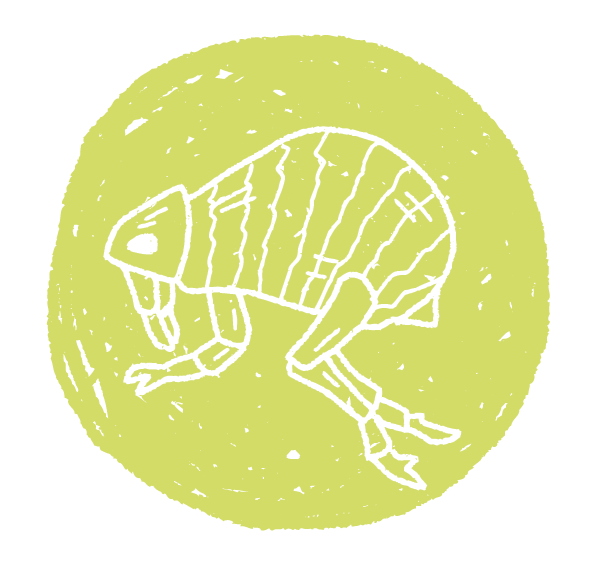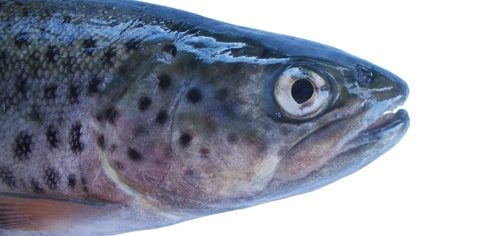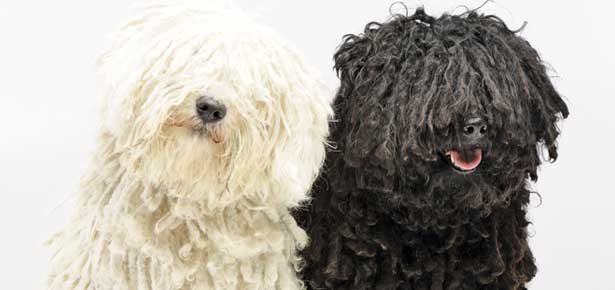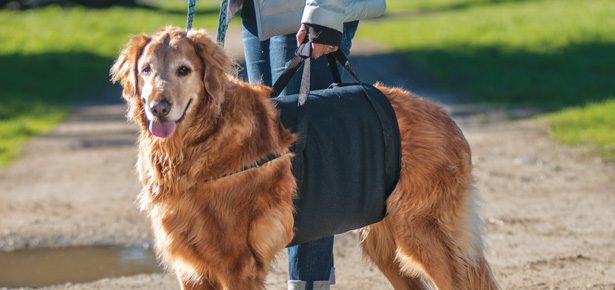

More Than You Ever Wanted to Know About Fleas
What to do when flea-time comes
Q: The other day I found a flea on my dog. Is it at all possible she just has one flea? She sleeps with me in my bed—are there fleas in my bed now? Help!
A: One flea does not a problem make, nor are fleas the only possible cause of your dog’s scratching. Rather than waiting for a problem to arise, however, I suggest you take preemptive action. It’s possible that your dog had only one flea and, having killed that little bugger between your fingernails with a comforting pop!, you no longer have a problem. But unfortunately a more realistic scenario is that you just happened to find that one flea on that one particular part of your dog at that one point in time; in all likelihood, the presence of a flea points to an infestation.

to another. To heck with Spiderman—Fleaman could whoop Spidey’s butt!
A flea’s eggs are laid by the hundreds and settle into our carpets and upholstery—and our bedding, if our pets are allowed to sleep with us. The eggs hatch into larvae, which feed on the dander shed by us and (mostly) our pets and the droppings (“flea dirt,” or frass) of adult fleas. If properly fed, the larvae wrap themselves into cocoons (pupae) and wait for the right conditions to hatch out as adults. All of these life stages take place right under our noses, and will continue unchecked unless we humans step in and do something.
The “right conditions” for hatching include a temperate environment and increased humidity. This is why fleas can particularly be a problem in eastern Canada and the U.S. during the summer months, and on the West Coast almost all year long. But just because it’s cold outside, don’t think your pet is safe: fleas can take up residence in a pet-friendly building and happily reproduce year-round.
Fortunately, over the past 20 years conventional flea treatments have evolved to a point where flea control has become truly easy. Sure, you can bathe your dog—a good flea shampoo will kill whatever fleas are on her. As soon as she’s dry, however, replacement fleas from your carpets, bedding, and furniture will hop back on and start feeding again. Additional treatment is necessary. Several veterinary-approved monthly treatments are available that will either kill the fleas outright or prevent them from reproducing. Your veterinarian should be able to recommend the right product for you, taking into account the seriousness of your problem. You’ll also need to wash all your dog’s bedding (hot water!) and clean your house. There is also a natural route to treatment; it isn’t as instantaneous but it is free of harsh chemicals. You’ll have to weigh the severity of the flea problem vs. the benefits of your desired approach. Either way, the same steps—flea combing (combing your dog with a fine-toothed flea comb), bathing, laundering, vacuuming—should be undertaken.
A flea’s eggs are laid by the hundreds and settle into our carpets and upholstery—and our bedding, if our pets are allowed to sleep with us.
What is it about fleas that make a dog itch? It’s the crawling all over—and the biting. Fleas are picky about what they eat. They will jump onto us humans in their quest for food, but once they’ve bitten us they’ll realize we’re the wrong host and venture onward. But it was this hunting and biting behaviour that allowed them to spread the bubonic plague in medieval times. It wasn’t the rats—though we’ve persecuted them aggressively enough in consequence. It wasn’t even the fleas on the rats that caused the disease. It was a bacterium, Yersinia pestis, that lived in the fleas’ salivary glands and was introduced into humans through those exploratory flea bites.
Plague is no longer a threat; in most cases the only symptoms a flea bite will cause are mild irritation and a small, localized red spot. But if your dog sleeps with you, change your bedding regularly, because the thought of sleeping with insect larvae is really gross! Sweet dreams!
Join the newsletter and never miss out on dog content again!
"*" indicates required fields
By clicking the arrow, you agree to our web Terms of Use and Privacy & Cookie Policy. Easy unsubscribe links are provided in every email.





